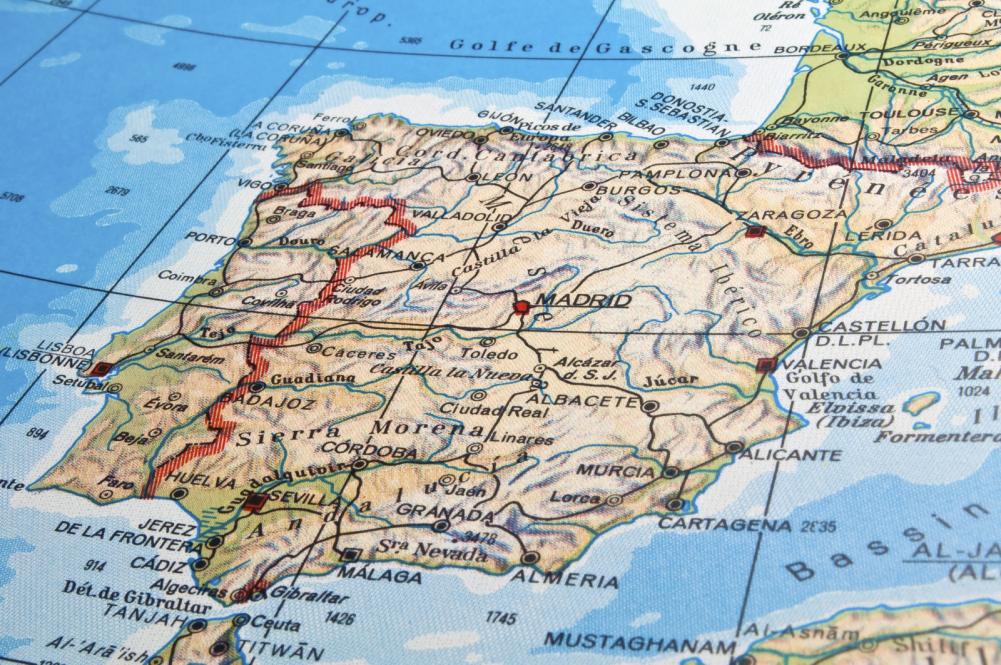
Spain is a wonderful country to visit. In the spring of 2012, we lived in an apartment in Barcelona for one month. We then flew to Malaga where we rented a car. Driving up to Madrid, we took our time and visited Granada, Ronda, Seville and some smaller towns that were off the beaten track.
In 2015 we stayed for one month in Seville. We made a couple of trips to Cadiz, and at the end of our stay experienced the “Semana Santa”.
Here are our Blog Posts from our stays and travels in Spain, previously published on Gamesforlanguage.com:
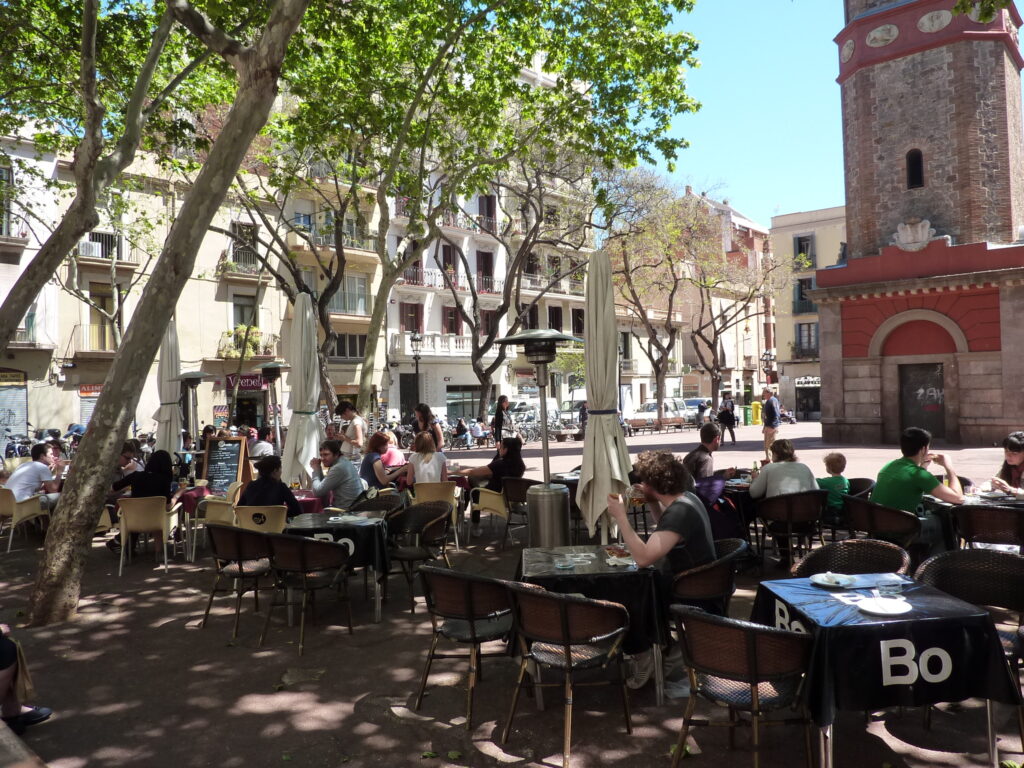
Learning Spanish: Bilingual in Barcelona…
During our first few days in Barcelona we figured out how to get around town with public transport. We also discovered that Barcelona was really a bilingual city.

Learning Spanish in Barcelona – primera etapa de David en España
We explored the neighborhood of Gràcia, where our apartment was located. Not far from there we found “Carrer de Mallorca”, the Catalan name for the Calle de Mallorca (which plays a role in our Spanish 1: David en España course)

Spanish Learning and Dining – Solving Lunch and Dinner Mysteries
We studied the mysteries of Catalan menus in one of our favorite restaurants “O’Gràcia!”, located only minutes from our apartment. (Sadly, when we checked online recently, we couldn’t find O’Gràcia!’s website.)
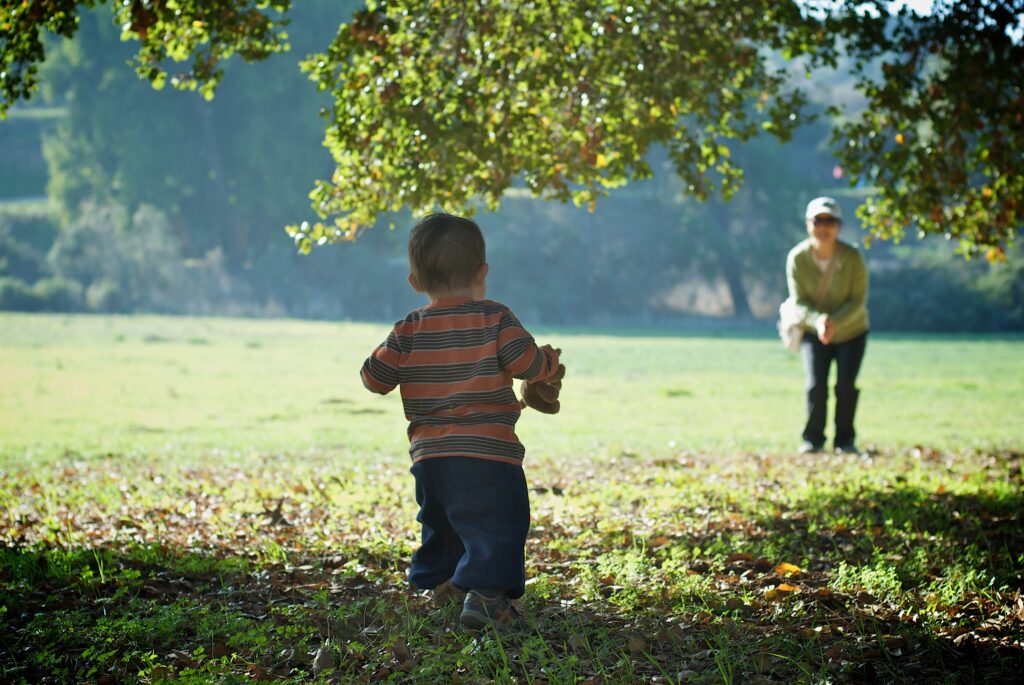
Barcelona Tips: First Steps for Building a Language “Basis”
Learning a new language always requires taking some first steps. And knowing some essential words and phrases to communicate will make the beginning so much easier.
Our (expat English-speaking) landlord Rob had some interesting and unusual ways to learn and improve his Spanish.
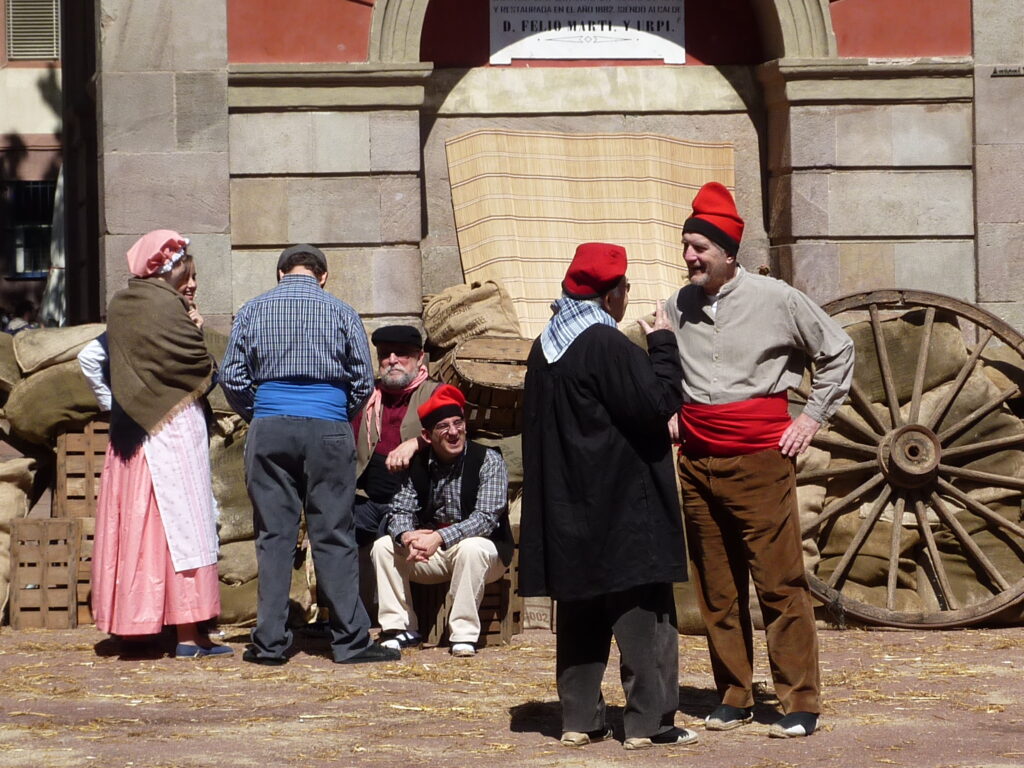
In Barcelona Learning “Spanish” is Not Enough
What amazed us most in Barcelona were certain statements we heard quite a few times, such as: “When I go to Spain…”, or “The taxes we are paying to Spain…”. Catalan people still don’t see themselves as a part of Spain.
Since our visit in 2012 relations between between “Spain” and Catalonia have not improved.
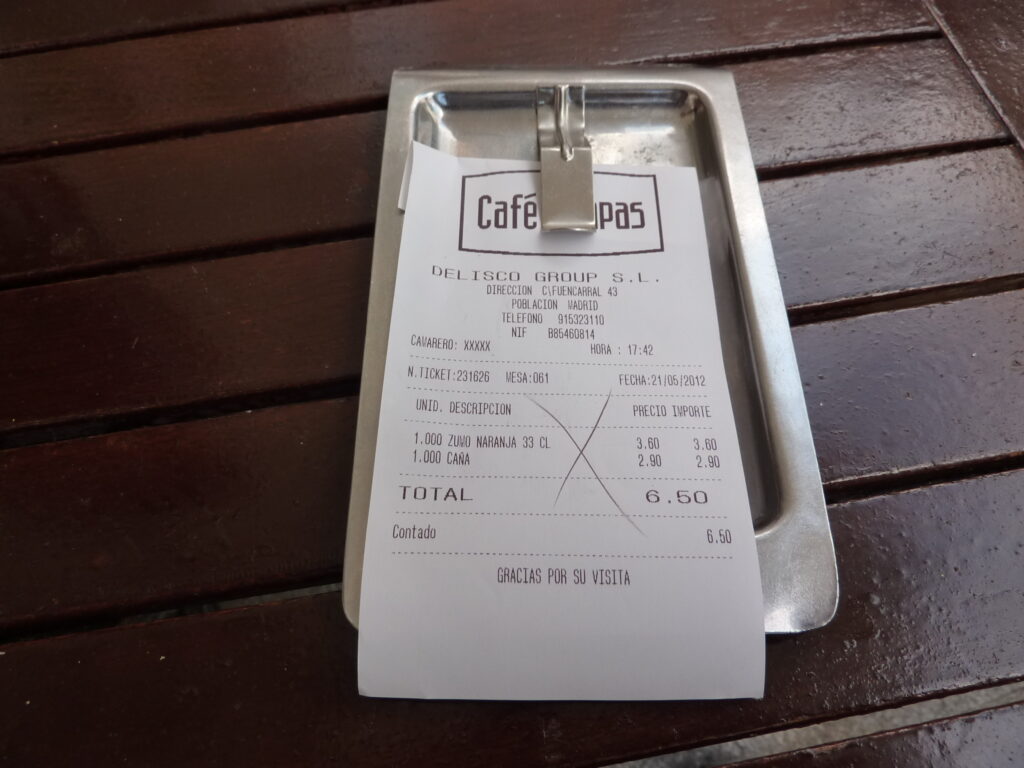
La cuenta, por favor – adding up and making change in Spain
What we found interesting during our travels in Spain was the fact that the check/payment process never varied – whether we were in a little sandwich shop on the road in Andalusia, or in a hotel in the city of Seville or Madrid.
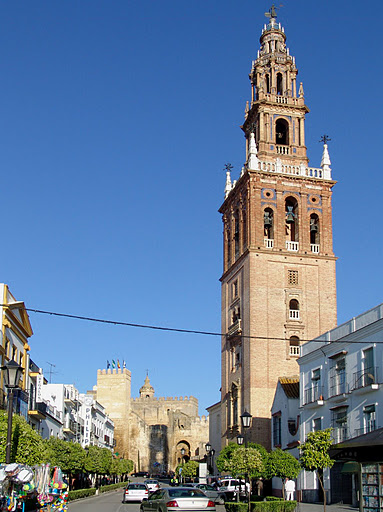
Off the Beaten Track in Spain (1): Europe’s Oldest Town?
On our drive from Seville to Córdoba, we decided to stop at Carmona, a town of about 25,000 inhabitants and the first major town, about 25 miles east of Seville.
Our travel guide only had a short entry, but we were glad that during our travels in Spain we got off the main highway. The town is located on top of a hill overlooking fertile plains and it has an interesting history.
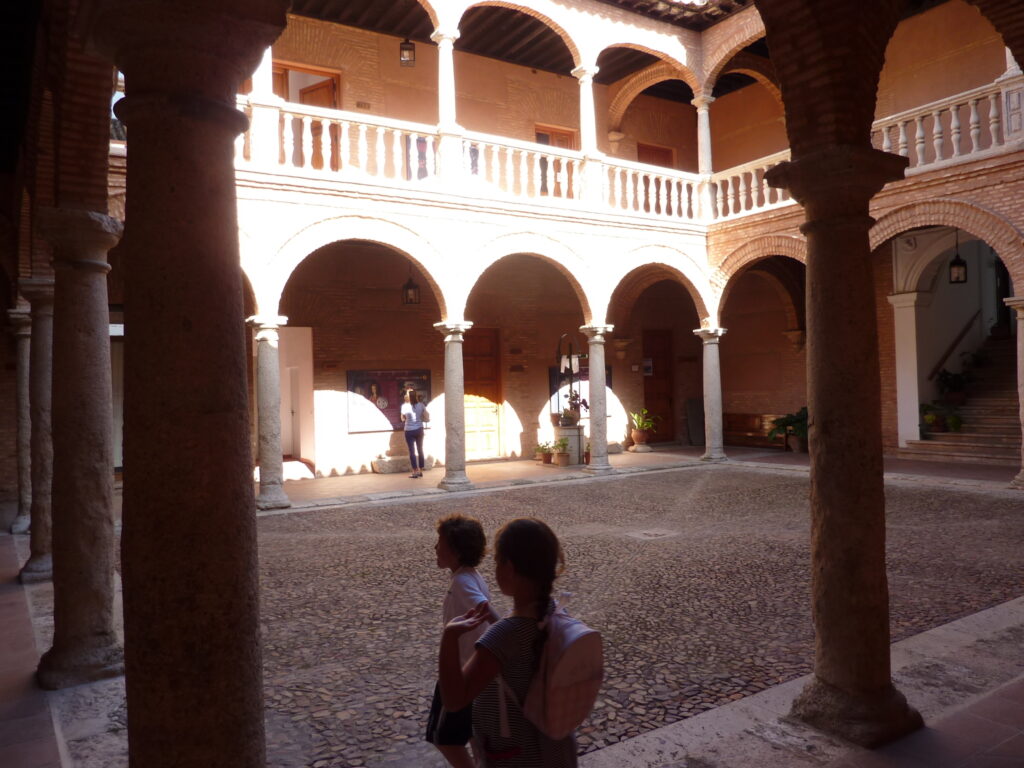
Off the Beaten Track during travels in Spain (2): Speak Spanish
En route by car from Córdoba to Madrid (both “must see” destinations), we turned off the main highway and followed signs to the town of Almagro (“red clay” in Arabic), where we decided to stay the night.
It’s a small and stately town with an unusual history. We learned, for one, that in 1525 the Fuggers, a German banking family, due to the financial woes of Charles I of Spain, became the beneficiaries of cinnabar mines near Almagro and Almadén. (Cinnabar is a mineral from which mercury is extracted.)
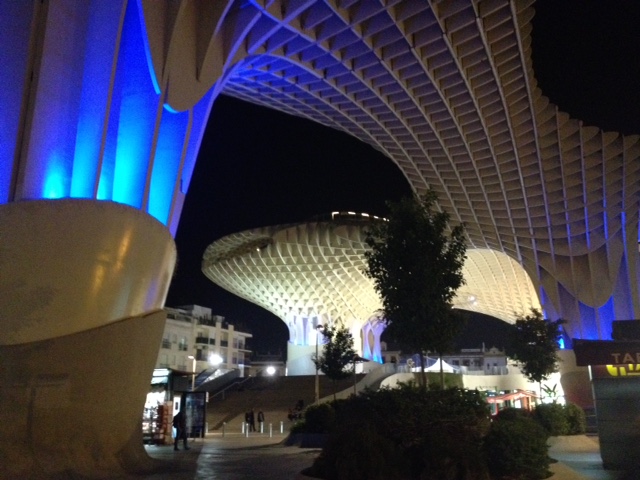
Learning Spanish – First Impressions of the Local Dialect in Seville, Spain
The Metropol Parasol in Seville dominates the plaza and surprised us during our first evening (see picture above) as we explored the neighborhood. Suddenly we found ourselves under what is locally called “las setas” (the mushrooms).
Designed by the German architect Jürgen Mayer, the Metropol Parasol is a giant structure, constructed of wood panels and steel. It was built between 2005 and 2011 to replace a defunct and derelict space.
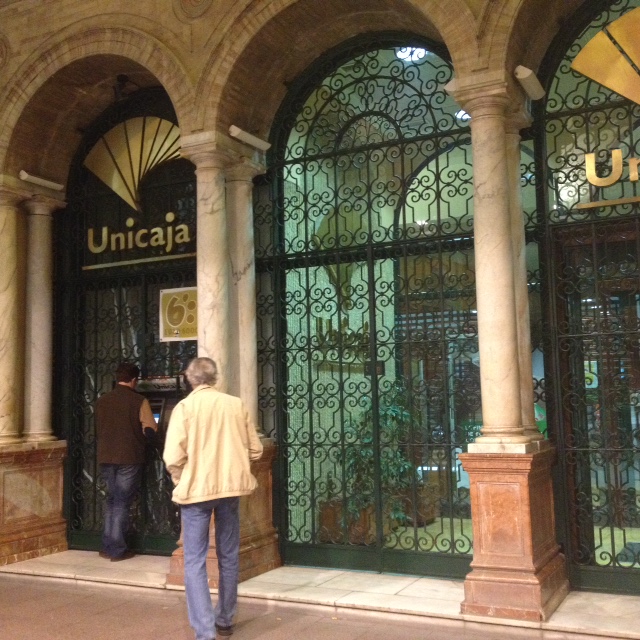
5 Tips for Dealing with ATM Troubles Abroad (And at Home)
When it comes to foreign currency, traveling has become so much easier: Instead of worrying about how much of the foreign currency you should change at home or at the foreign airport (do you still remember “traveler checks”?) – today you can pay with your credit card(s) in many places or withdraw cash at ATM machines all over the world.
Ever since an ATM in Barcelona did not return my card a few years ago, I have been reluctant to withdraw money from a cash machine at night.
And you will want to know what happened to us in Seville at the ATM above!
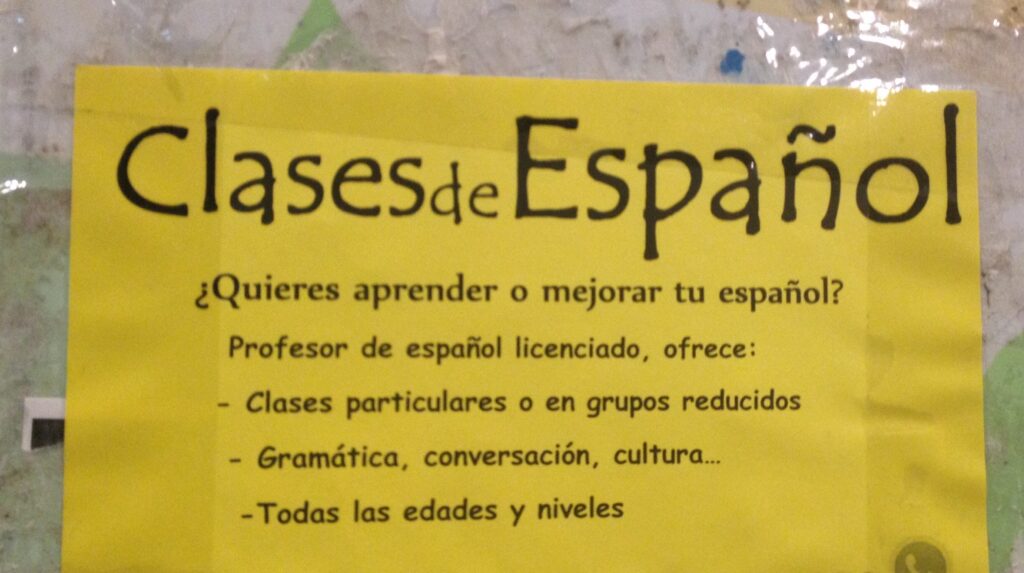
How a Tutor Boosted our Language Fluency
It’s not easy for adult foreigners to meet and engage with locals, so we had a plan. We set up “live” language exchanges in advance and were determined to find a local teacher for conversation lessons.
We met two delightful locals who wanted to improve their English as much as we our Spanish: A young woman in the hotel business who had just been laid off, and a young Spanish teacher on vacation. We met them several times in Cafés and bars.
We also intended to ask our language partners if they knew any tutors for our remaining two weeks, but instead came across a notice posted at a nearby square. It offered: Clases de Español (see photo), and had a phone number attached.
Carlos, a licensed teacher of Spanish at a local school, spoke no other foreign languages except some Italian.
That he spoke no English was a huge stroke of luck for us. It forced us to express and explain ourselves only in Spanish.
He in turn, being a trained teacher, knew just when and how to correct us without interrupting the conversation too much.
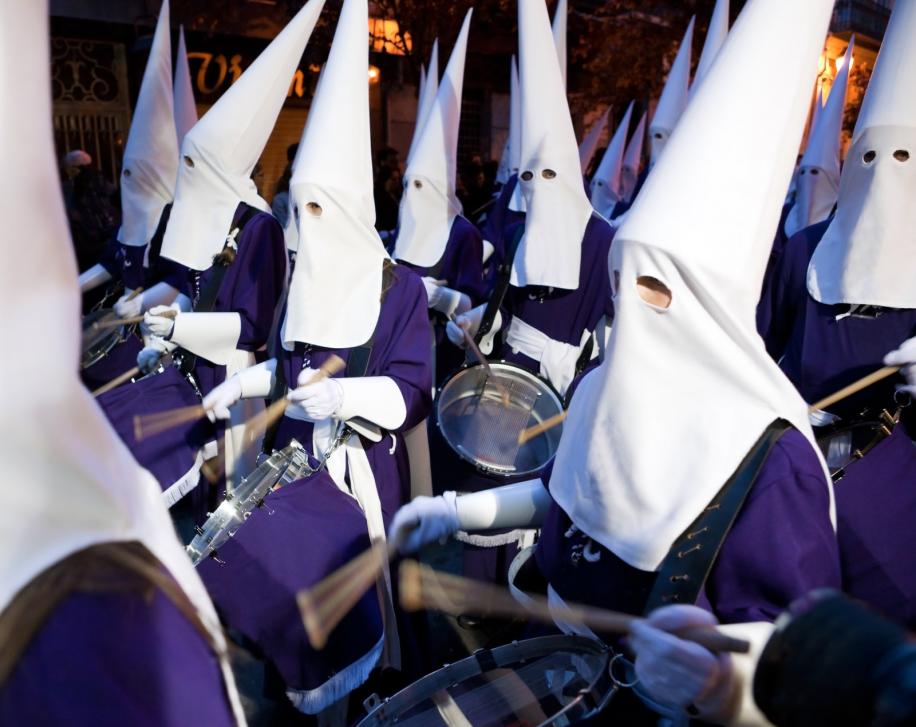
Impressions of Semana Santa in Seville, Spain
At the end of our one-month-for-fluency stay in Seville (March 2015), we experienced the two initial days of Seville’s amazing family festival, the Semana Santa (Holy Week).
The entire city seemed to participate.
Whole families, from babies to grandparents, and many groups of young and old came out into the street, especially in the late afternoon and evenings.
During Semana Santa, there were seven to ten daily processions, organized by the different “cofradías” or “hermandades” (religious brotherhoods), social organizations that play a crucial role in putting on the processions.
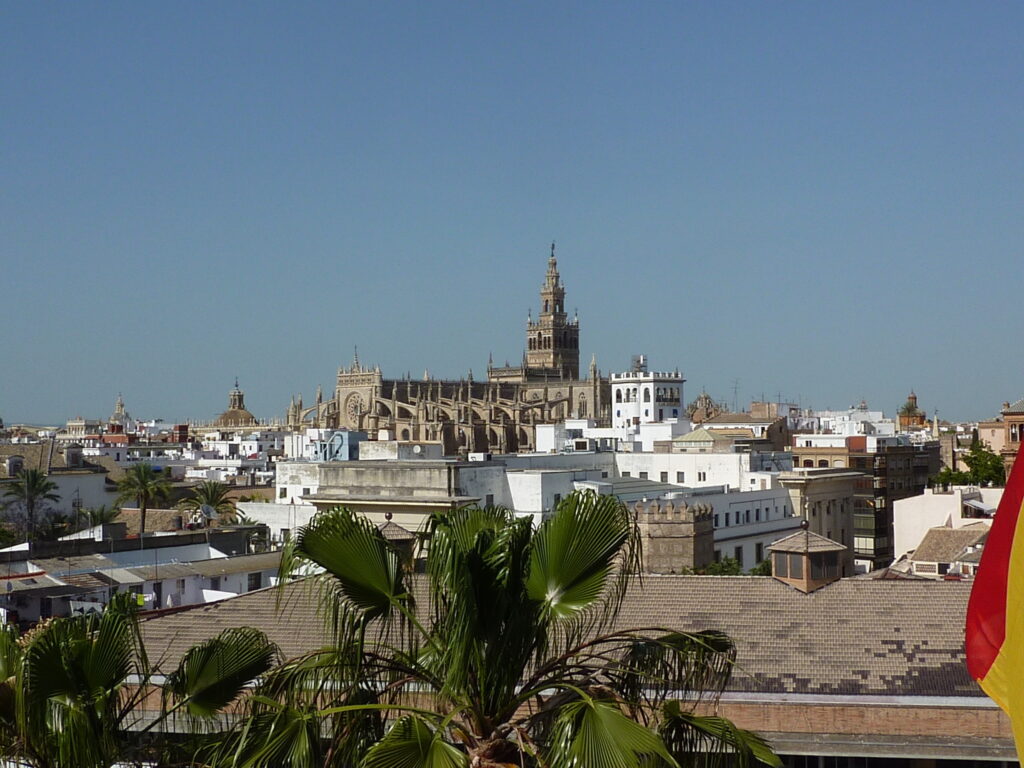
Language Learning and the Seville Dialect
During our stay in Seville, Spain (see picture above), we were again reminded how challenging local dialects are for foreign language learning.
As we also describe in a previous post: Learning Spanish – First Impressions of the Local Dialect in Seville, Spain, we noticed right away that some consonants are dropped at the end and in the middle of words, so “gracia” instead of “gracias,” “do cerveza” instead of “dos cervezas,” “E’paña,” “e’pañol,” etc.
And have you heard about the “Seseo” and “Ceceo” dialects?
So, if reading Travels in Spain encourages you to brush up on your Spanish or, at the very least, learn and practice the first 11+ essential Spanish words and phrases, then this post will benefit you twice!